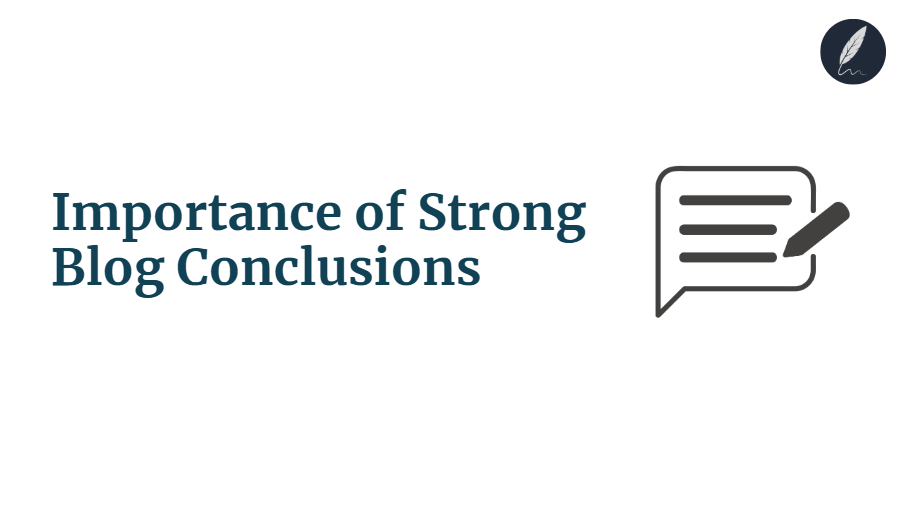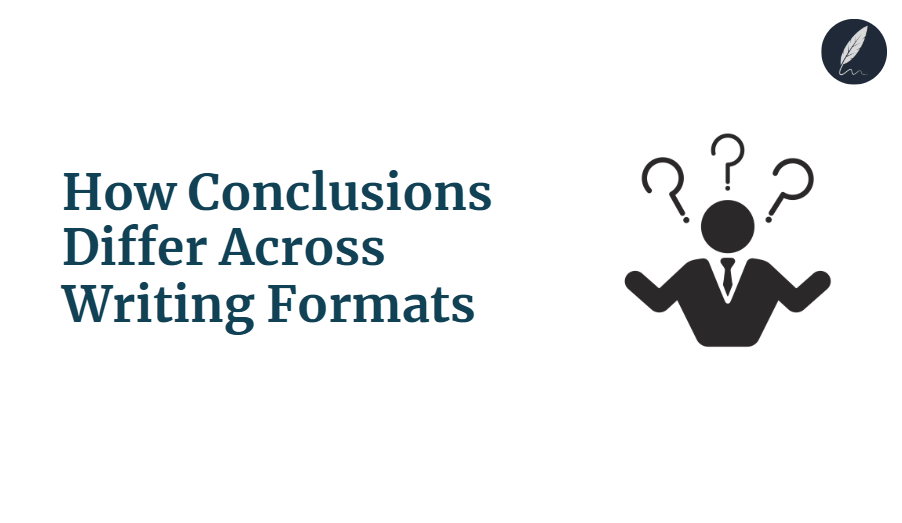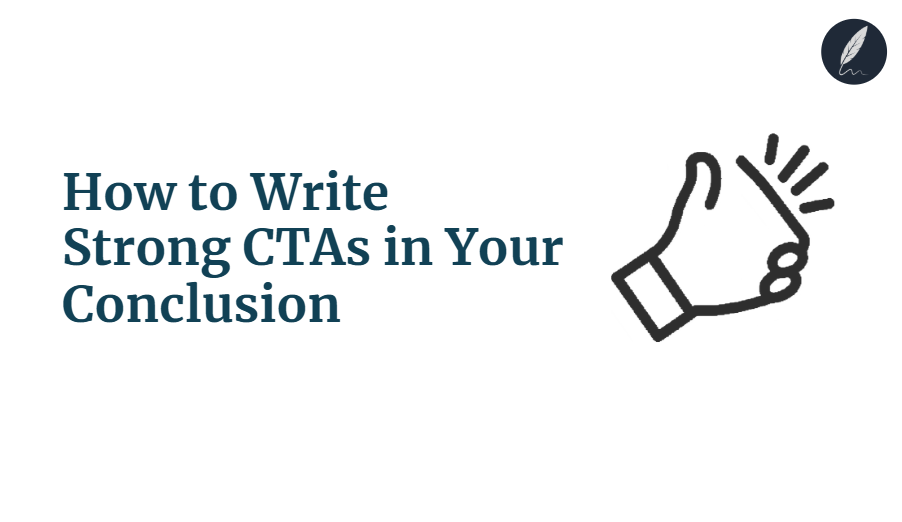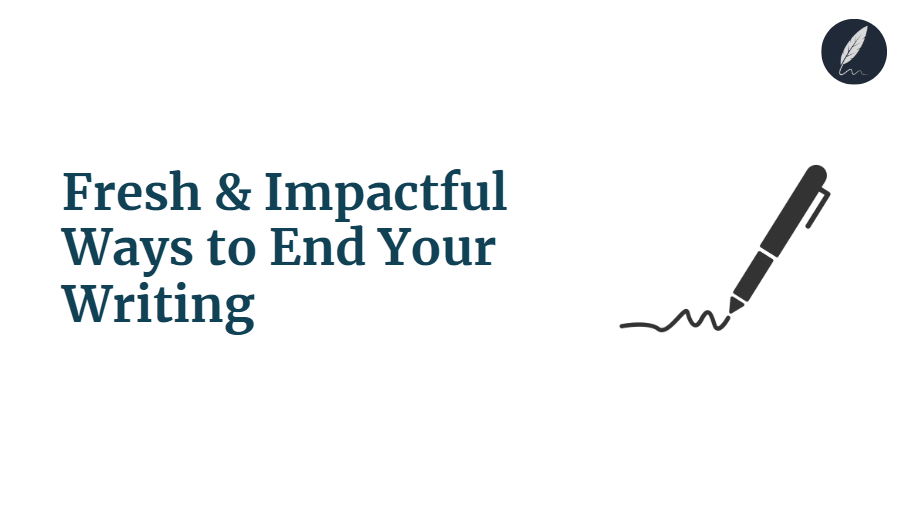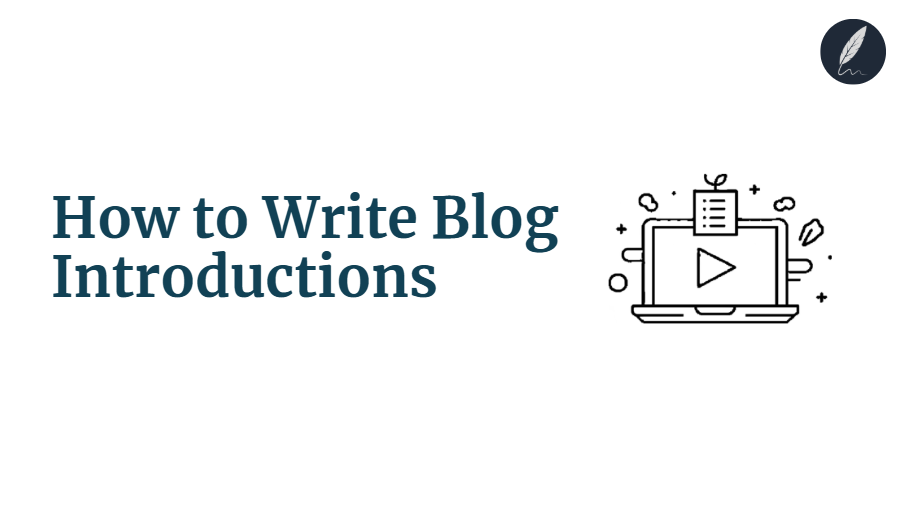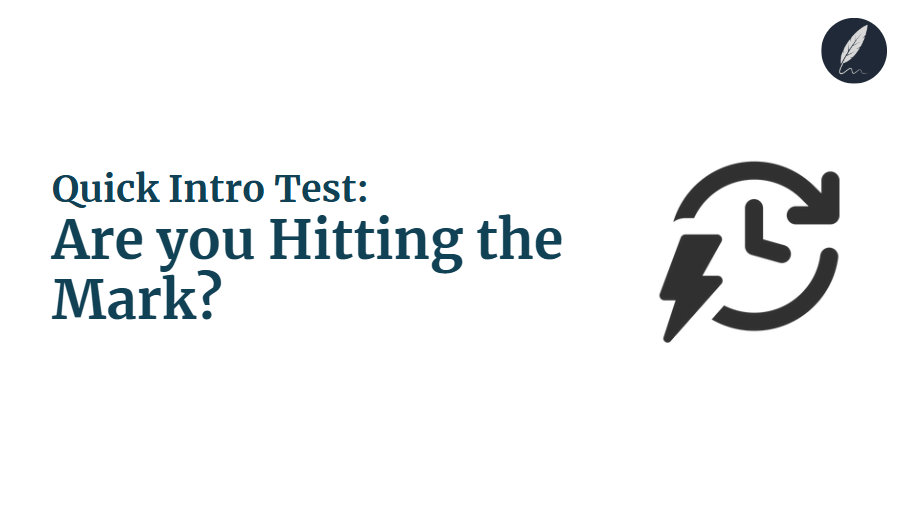Strong blog conclusions can make or break your content’s impact. Most writers focus on crafting perfect openings but neglect their endings, missing valuable opportunities to connect with readers.
This last impression, the blog post ending, is crucial for reader engagement and action, making the importance of a good blog conclusion undeniable.
Discover what makes a strong blog conclusion, explore diverse conclusion examples, and master best practices for blog post endings.
Let’s explore how to conclude a blog post effectively.
Key Takeaways
- Lasting Impression: A strong conclusion is your final chance to reinforce your message, engage readers, and prompt action, leaving a memorable impression.
- Core Elements: Effective conclusions summarize points, reiterate the core message, include a clear CTA, and offer a final thought or future outlook.
- Diverse Endings: Choose from summary, inspirational, predictive, or strong call-to-action conclusions, tailoring your blog post ending to your content’s goal.
- Avoid Pitfalls: Don’t introduce new info, use abrupt endings, simply restate the intro, or sound underconfident; these dilute your message.
- Polish Your Finish: Keep conclusions concise, match your article’s tone, proofread rigorously, and test different approaches for optimal engagement.
Why a Strong Blog Conclusion Matters
A powerful blog post conclusion is more than just an ending, it’s your final chance to connect with readers and leave a lasting mark.
If the ending falls flat, it can lessen the impact of everything that came before it. This is the true importance of a good blog conclusion.
Here’s why a strong blog conclusion is absolutely vital for any piece of content:
1. Reinforcing the Main Message
Your conclusion helps readers fully grasp the main point of your article. It solidifies the core idea, making sure your message sticks in their minds. It’s your last opportunity to ensure clarity and purpose.
A strong blog conclusion should echo your article’s central argument. It’s not about repeating yourself word-for-word.
Instead, rephrase your main idea in a fresh, impactful way. This helps readers feel they’ve truly understood what you wanted to convey.
2. Summarizing Key Takeaways
After reading a detailed article, people appreciate a brief recap. A good blog post conclusion quickly highlights the most important points. This helps readers remember the crucial information, making your content more effective.
When you summarize key takeaways, focus on just two or three essential insights. Avoid trying to list every single detail. The goal is to provide a quick, clear reminder of what they’ve learned, aiding their retention and comprehension.
3. Encouraging Engagement and Action
A well-crafted blog post ending can move readers to do something. It can inspire them to leave a comment, share your article on social media, or explore related content. This kind of interaction shows your content truly resonated.
Many successful blogs see more social shares and comments when their conclusions are optimized with clear prompts.
This shows how writing powerful conclusions can directly lead to increased reader participation and wider reach. It’s about turning passive readers into active participants.
4. Leaving a Memorable Impression
People tend to remember the last thing they read. This is a powerful psychological effect.
A conclusion that is memorable ensures your article stands out. It’s like the final scene of a gripping movie or the last note of a beautiful song, it’s what stays with you long after it’s over.
By focusing on what makes a blog conclusion strong, you can create a lasting impact.
Key Elements of an Effective Blog Conclusion
Now that we understand why a strong blog conclusion is so important, let’s break down its essential parts. Crafting a truly impactful blog post ending isn’t just about wrapping things up.
It’s about building a compelling finish that reinforces your message and guides your reader. Knowing what makes a strong blog conclusion will elevate your writing.
Here are the core elements you need to master for an effective blog post conclusion:
1. Summarize Main Points (Without Repetition)
The goal here isn’t to copy and paste your introduction or just list everything again.
Instead, think of it as “the art of recap.” Your blog post conclusion should skillfully pull together the key ideas you’ve presented.
Synthesize means bringing different points together into a bigger picture. For example, if your article discussed three ways to improve productivity, your conclusion should remind the reader of these ways and how they collectively lead to overall efficiency.
This helps solidify understanding without sounding repetitive. It shows how all your arguments connect to support your main message.
2. Reiterate the Core Message
Every article has a central argument or main point. In your blog post ending, you need to echo this core message. This means rephrasing your article’s central idea in a new, impactful way.
Why rephrase?
Because it ensures your central argument truly “sticks” with the reader. It’s your last chance to make sure they walk away remembering the primary insight you wanted to share.
3. Present a Clear Call to Action (CTA)
A strong blog conclusion often includes a clear call to action. This is where you direct your readers on what to do next. A well-placed CTA transforms passive reading into active engagement.
There are many types of CTAs you can use:
- Comment: “What are your thoughts on X? Share in the comments below!”
- Subscribe: “Don’t miss our next post! Subscribe to our newsletter for more insights.”
- Share: “Found this helpful? Share it with a friend who needs it!”
- Visit a Product/Service Page: “Ready to simplify your writing? Explore Orwellix Pro and see the difference.”
- Download: “Download our free guide to [Topic] and get started today.”
When thinking about how to write a call to action in a conclusion, remember these tips:
- Use Action-Oriented Verbs: Start with strong verbs like “Discover,” “Explore,” “Learn,” “Start,” or “Download.”
- Create Urgency or Benefit: Let readers know what they gain or why they should act now.
- Keep it Concise and Visible: A CTA should be short, clear, and easy to spot. Avoid burying it in a long paragraph.
A powerful CTA ensures your ending isn’t just informative, but also functional, guiding your audience towards your next objective.
4. Offer a Final Thought or Future Outlook
To make your conclusion truly memorable, consider ending with a thought-provoking idea or a look into the future.
This broadens the perspective beyond the immediate topic of your article.
This “so what?” factor connects your article’s message to a larger context. It might involve:
- A thought-provoking question: “What will you do differently after reading this?”
- A prediction about the future: “As technology advances, we can expect X to become even more vital.”
- A broader implication: “Understanding X isn’t just about business; it’s about transforming how we communicate in every aspect of life.”
This element adds depth and encourages readers to continue thinking about your topic long after they’ve finished reading.
It’s a great way to leave a lasting impression and shows the wider relevance of your content.
Different Types of Blog Conclusions with Examples
Now that you understand the key ingredients of a great blog post conclusion, let’s explore how to put them into practice.
There isn’t just one way to end your article. By learning how to write a blog conclusion using different styles, you can pick the best blog post ending for your specific content.
Each type helps you achieve a unique goal, from summarizing facts to inspiring action.
Here are some common types of conclusions with examples to guide you:
1. The Summary Conclusion
This is one of the most common blog post conclusion types. It works by briefly revisiting the main points or key evidence from your article.
This approach is perfect for complex or educational posts, helping readers recall and solidify what they’ve learned. It reaffirms your core argument without simply repeating it.
- Description: This type of ending reaffirms the core argument by briefly revisiting the key evidence or points. It’s ideal for complex or educational posts where readers need a clear recap.
- Example 1 (Tech Blog): “Ultimately, while AI brings unprecedented efficiency to content creation, the human touch remains indispensable for true creativity and emotional resonance. The future of content lies in this intelligent synergy.”
- Why it works: It reminds the reader of the main tension discussed (AI vs. human touch) and offers a balanced perspective for the future.
- Example 2 (Health Blog): “From mindful eating to consistent movement and adequate sleep, adopting these simple habits can profoundly impact your overall well-being, fostering a healthier and happier you.”
- Why it works: It concisely summarizes the three core actionable habits discussed in the article, reinforcing their collective benefit.
2. The Inspirational/Motivational Conclusion
Do you want your readers to feel empowered or change their outlook?
An inspirational conclusion is your tool. This strong blog conclusion aims to uplift or encourage personal action, making your content resonate on an emotional level.
- Description: This type of blog post ending aims to uplift, empower, or encourage readers to take personal action or change their perspective. It leaves them feeling hopeful or energized.
- Example 1 (Self-Improvement Blog): “Every challenge is an opportunity in disguise. Don’t just read about growth; embody it. Your potential is limitless, it’s time to unleash it.”
- Why it works: It uses motivating language to inspire the reader to take what they’ve learned and apply it directly to their life.
- Example 2 (Creative Arts Blog): “Let your imagination soar beyond the boundaries of convention. The world awaits your unique masterpiece, dare to create it.”
- Why it works: It taps into the reader’s creative spirit, encouraging them to overcome limitations and produce something unique.
3. The Predictive/Future-Oriented Conclusion
This type of conclusion looks ahead. It speculates on future trends, implications, or what readers can expect next based on the information provided in your article.
It positions your content as forward-thinking and visionary.
- Description: This blog post ending looks ahead, speculating on future trends, implications, or what the reader can expect next. It adds a layer of foresight to your writing.
- Example 1 (Marketing Blog): “As voice search continues its ascent, brands that prioritize conversational SEO today will undoubtedly dominate the digital landscape of tomorrow. Are you ready for the conversation?”
- Why it works: It predicts a future trend and challenges the reader to prepare for it, making the article’s advice feel urgent and relevant.
- Example 2 (Environmental Blog): “While the challenges of climate change are vast, the growing commitment to renewable energy and sustainable practices suggests a hopeful horizon. The seeds of a greener future are being planted now.”
- Why it works: It acknowledges current problems but ends on an optimistic note about future solutions, leaving the reader with hope.
4. The Strong Call-to-Action Conclusion
This is perhaps the most strategic type of blog conclusion.
A call to action directly tells the reader what to do next. It’s often tied to a product, service, or further engagement, turning interest into action. This is key for writing powerful conclusions that drive results.
- Description: This ending directly tells the reader what to do next. It’s often tied to a product, service, or further engagement, making it crucial for conversion.
- Example 1 (Product Review Blog): “Ready to experience the clarity and precision Orwellix Pro brings to your writing? Start your trial today and transform your documents from good to great!”
- Why it works: This is a direct call to action that promotes our writing enhancement platform, Orwellix Pro. It offers a clear next step (trial) and highlights a key benefit (transforming documents), directly addressing users interested in improving their writing quality.
- Example 2 (Financial Advice Blog): “Don’t let financial uncertainty hold you back. Download our free budget template and take the first step towards securing your financial future.”
- Why it works: It identifies a common problem (financial uncertainty) and provides an immediate, helpful solution (downloading a template) to empower the reader.
By understanding these different types, you can choose the most effective blog post ending to achieve your content goals and ensure your blog conclusion leaves the right impression.
Best Practices for Crafting Powerful Blog Conclusions
Crafting a truly impactful blog post ending goes beyond knowing the types of conclusions. It’s about applying specific best practices for blog post endings that elevate your content.
By focusing on these strategies, you can ensure your conclusion doesn’t just finish your article but amplifies its message and encourages action.
1. Keep it Concise
Your blog conclusion should be impactful without being lengthy. Readers have just absorbed a lot of information, and a brief, punchy ending helps solidify your message without overwhelming them. The goal is clarity and conciseness.
Aim for your conclusion to be about 5-10% of your total article length.
For a 1,000-word article, this means around 50-100 words. Get straight to the point.
Summarize, call to action, and leave your final thought efficiently. Studies suggest that shorter, more direct communication often leads to better comprehension and retention, especially online.
2. Match the Tone of Your Article
Consistency is key in good writing. Your blog conclusion should reflect the overall tone and style of your article.
If your article was formal and analytical, a casual or overly emotional conclusion would feel out of place.
For example, if you wrote a serious, data-driven report, your conclusion should maintain that professional tone.
If your article was light-hearted and conversational, your blog post ending can carry that warmth through to the last sentence. This ensures a seamless reading experience and reinforces your brand’s voice.
3. Proofread and Refine Rigorously
The blog post ending is often the most critical part of your article. It’s the last thing your reader sees, and any errors here can seriously impact how they perceive your content and your credibility.
A poorly worded or grammatically incorrect conclusion can undo all your hard work.
Take extra time to proofread and refine your conclusion. Check for grammar issues, awkward phrasing, and unclear sentences. This helps you polish every sentence to ensure your ending is flawless and leaves a professional, lasting impression.
4. Test and Iterate
Don’t just set your conclusions and forget them. The best writers continually analyze what works and what doesn’t.
Your blog post conclusion can be a powerful tool for driving engagement and conversions, so it’s worth optimizing.
Encourage A/B testing different conclusions or call to action elements.
For instance, try two slightly different final paragraphs or CTAs and see which one performs better. Review your website analytics for key indicators such as:
- Bounce Rate on the last paragraph: A high bounce rate might suggest readers are disengaging right at the end.
- CTA Click-Through Rates (CTR): This shows how many readers are responding to your call to action in a conclusion.
By regularly reviewing these metrics, you can gain actionable insights into what truly resonates with your audience.
Write smarter with Orwellix
The Orwellix AI Capabilities that helps you craft clearer, more effective content.
Conclusion
We’ve explored how a strong blog conclusion serves as your final opportunity to summarize key takeaways, inspire your readers, and effectively drive them to action.
It’s the lasting impression that can determine your content’s ultimate success.
By mastering the art of the blog post ending, you elevate your writing from merely good to truly great and impactful.
Frequently Asked Questions (FAQ)
1. How long should a blog conclusion be?
A strong blog post conclusion should be concise, typically ranging from 5% to 10% of your article’s total word count.
For instance, if your blog post is 1,000 words, your blog post ending should be between 50 to 100 words.
The goal is to quickly summarize key takeaways, reinforce your main message, and provide a clear final thought or a call to action without being lengthy or introducing new information.
2. Can I introduce new ideas in a conclusion?
No, you should avoid introducing new ideas or information in your blog post conclusion. The purpose of a conclusion is to summarize, synthesize, and provide a final thought on what has already been discussed in the article.
Adding new concepts at the end can confuse readers, dilute your main message, and make your article feel incomplete.
3. What if my blog post doesn’t need a CTA?
Even if your blog post conclusion doesn’t require a direct call to action (like buying a product), it should still be engaging. Instead of a direct action, focus on leaving a memorable conclusion that resonates with the reader.
You can achieve this by offering a thought-provoking question, an inspiring final statement, a prediction about the future, or by emphasizing a broader implication of your topic.
The aim is always to reinforce your main message and provide a meaningful ending that encourages reflection or deeper understanding, even without a specific next step.
4. Is it okay to use an external link in my blog post conclusion?
Yes, it is often okay and even beneficial to use an external link in your conclusion, especially if it serves as a call to action.
For example, you might link to your product page, a relevant resource, a sign-up form, or a credible source for a statistic you mentioned. Ensure the link directly relates to your conclusion and guides the reader to a relevant next step.
Join 10,000+ Professionals
Unlock your potential with Orwellix. Experience advanced features and tools designed to enhance your writing and productivity.
Get Started with Orwellix